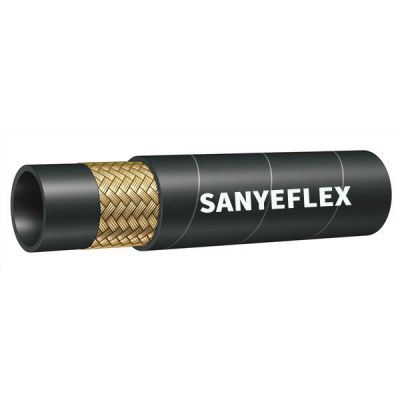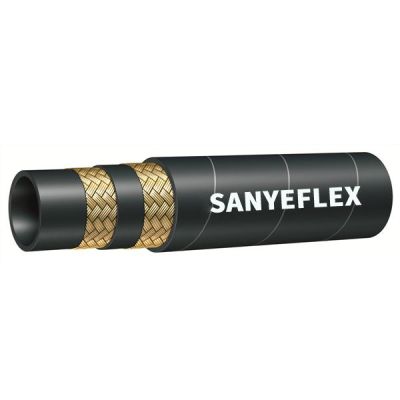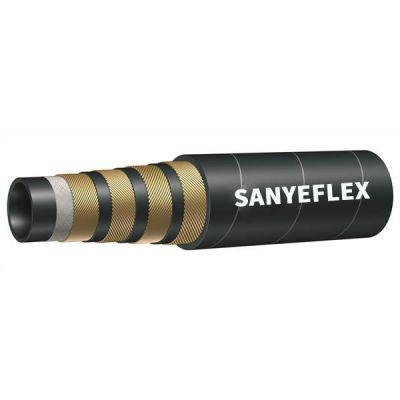05. 25, 2023
Hydraulic hoses play a crucial role in various industries, powering the movement of fluid and transmitting force in hydraulic systems. Over time, these hoses can deteriorate due to wear and tear, which can compromise the safety and efficiency of the entire system. Therefore, it is essential to understand when hydraulic hoses should be replaced to prevent potential failures and downtime. In this article, we will explore the factors that affect the lifespan of hydraulic hoses and provide guidelines for their replacement.
The lifespan of hydraulic hoses depends on how frequently and under what conditions they are used. Hoses subjected to heavy usage, extreme temperatures, abrasive environments, or high-pressure applications may experience accelerated wear. In such cases, they may need to be replaced more frequently. Regular inspection of hoses used in demanding conditions is crucial to detect signs of degradation early on.
Visual inspection is a fundamental aspect of determining the condition of hydraulic hoses. Regularly examine hoses for signs of wear, such as cracks, abrasions, bulges, or leakage. If you notice any of these issues, it is a clear indication that the hose should be replaced immediately. Additionally, check for any visible signs of aging, including hardened or brittle rubber, which can compromise the hose's integrity.
The flexibility of a hydraulic hose is vital for its proper functioning. Over time, hoses can become less flexible, resulting in restricted fluid flow and reduced system performance. Perform a flex test by bending the hose in different directions to assess its flexibility. If the hose feels stiff or exhibits signs of inflexibility, it may be time to replace it.
Always refer to the manufacturer's guidelines for hose replacement. Manufacturers typically provide recommendations based on the specific hose type, application, and expected lifespan. These guidelines consider factors such as hose materials, reinforcement layers, and anticipated wear characteristics. Adhering to the manufacturer's recommendations ensures that the hoses are replaced at appropriate intervals to maintain system reliability and safety.
Implementing a preventive maintenance program is crucial for extending the life of hydraulic hoses. Regularly scheduled maintenance allows for comprehensive inspections, early detection of potential issues, and timely replacement of hoses. By proactively replacing hoses before they fail, you can avoid costly downtime, prevent damage to other system components, and ensure the safety of personnel.
Proper training and awareness among operators are essential for preserving the lifespan of hydraulic hoses. Operators should be educated on the correct handling, storage, and usage of hoses. They should be aware of factors that can contribute to hose degradation, such as excessive bending, kinking, or exposure to chemicals. By promoting best practices and providing ongoing training, you can minimize the risk of premature hose failure.
In conclusion, regularly assessing the condition of hydraulic hoses and determining when to replace them is crucial for maintaining safety and efficiency in hydraulic systems. Usage intensity, environmental conditions, visual inspections, flexibility, manufacturer recommendations, and preventive maintenance are all key factors to consider. By following these guidelines and ensuring operator awareness, businesses can maximize the lifespan of hydraulic hoses, minimize downtime, and avoid costly repairs. Remember, a proactive approach to hose replacement is essential for the smooth operation of hydraulic systems and the overall success of industrial operations. We are a hydraulic hose supplier. If you are interested in our products, please contact us now!
سابق: What Are the Basics of Hydraulic Hoses?
التالي: Common Defects in Hydraulic Hoses: Identifying and Preventing Issues
شركاء
رقم الهاتف: +86 400 0318 111
البريد الإلكتروني: admin@sanyeflex.com
العنوان: رقم 218 ، شارع تشونغكي ، منطقة التكنولوجيا العالية ، مدينة هنغشوي ، مقاطعة خبي


